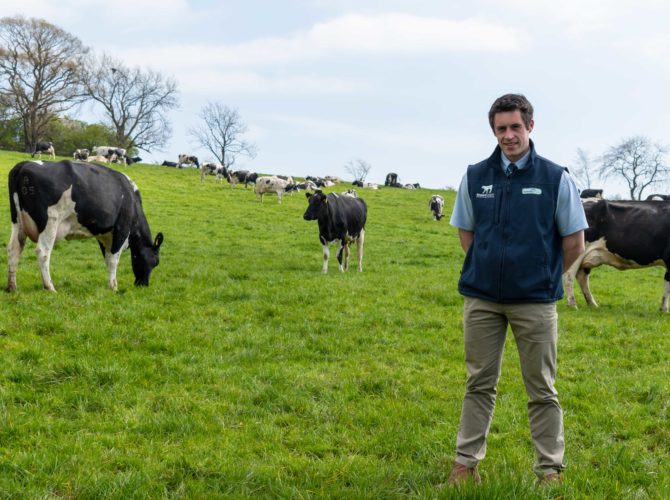Preparation for Dry Off is key for a smooth transition into lactation.
7th July 2021

The building blocks of a productive lactation begins with good foundations laid in the dry period. More and more is expected of the modern dairy cow, and in order to ensure an effective transition from the dry-cow period, we need to assess late lactation cows and plan accordingly.
While much emphasis is placed upon the importance of early lactation management, it is often the case that once cows are confirmed pregnant, they are seen as a much lower priority. Now is the time to plan ahead for autumn calving herds thinking of drying cows off within the next few months.
A number of key performance indicators can be made as part of a 4-point plan and monitored during late lactation and the subsequent dry period.
Body Condition Score (BCS) is an important indicator of body tissue reserves, largely affected by both lactation performance and nutritional balance. Cows are scored on a BCS basis of 1-5, with 1 being extremely thin, and 5 being over-fat. The ideal BCS is 3.0 at drying off, which gives a cow sufficient tissue reserves to meet energy requirements post-partum. Cows should be scored 100 days pre-drying off and feeding adjusted depending on BCS. It is easier to maintain condition in late lactation, with the possibility of improved production, rather than trying to gain BCS in the dry period. Excess condition in late lactation will also leave cows with a reduced feed intake in the dry period, leaving them more susceptible to issues post calving.
Rumen fill score is an indicator of adequate fibre and feed intakes. This will greatly reduce the incidence of left displaced abomasum (LDA) once calved. Maximising rumen fill in late lactation, and subsequently in the dry period will allow for improved dry matter intake in early lactation. This will help to reduce negative energy balance and exploit peak yield.
Locomotion score (walking ability of the cow) will directly impact on both rumen fill (reduced feed takes) and BCS. In late lactation, strategically check foot health, and trim where necessary. Lame cows won’t travel as much, not eat as much, and ultimately lead to further problems.
Dry period length should be ideally 6-8 weeks. Research has shown a dry period less than 6 weeks will lead to reduced milk production from lower secretory cell genesis in the mammary gland, whilst preventing the cow from regaining BCS. A dry period longer than 8 weeks will inevitably lead additional BCS and surplus fat deposition within the mammary gland, also reducing effective secretory cell formation.
For more information on managing cows in late lactation and preparing for dry off, please contact Dr David Johnston on 07929 865118 or your local Fane Valley Feeds Sales Specialist.


